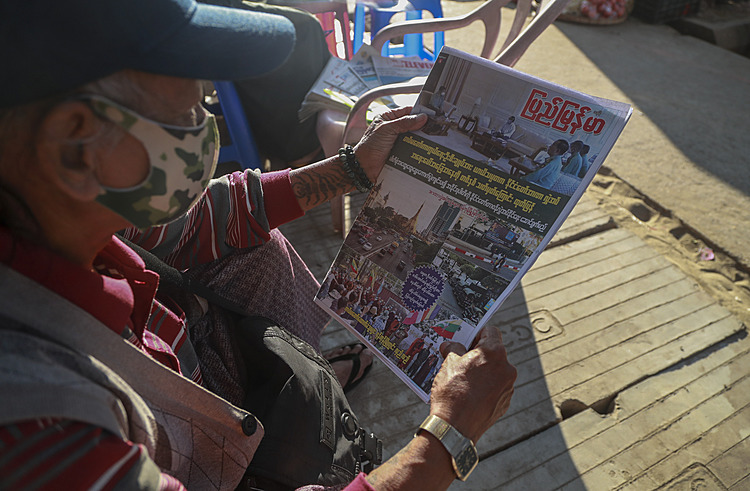Amid virus lockdown, radio lessons return in Latin America
FUNZA, Colombia (AP) — At a small farmhouse outside Colombia’s capital city, Marlene Beltran picks up a ruler and crayons. She turns on the radio, sits down at a creaky wooden table and helps her 5-year-old brother with a lesson on how to make paper cubes and decorate them with drawings that tell a story.
The Beltrans work on dairy farms and have no internet connection at home. So an hour-long radio lesson developed by the municipal government keeps the children busy — to a degree — while schools are closed because of the coronavirus pandemic.
Broadcasting was once used widely in Latin America to teach basic math and literacy skills to those in rural areas. Now radio and TV lessons are making a comeback during the virus lockdown, especially with the region’s spotty internet connectivity.
“We don’t want children to lose their studying habits,” said Diana Lopez, a teacher in the Colombian town of Funza who helps produce a daily radio show for elementary school students. Her county on the edge of Bogota has 10,000 public school pupils, of which about a third have no computers or internet at home.
“The radio lessons give children a space to develop their reading and writing skills and also show them that their teachers are still with them,” Lopez said.
While children in the United States and Europe watch lessons through web platforms and video conferencing apps, low connectivity in slums and villages across Latin America has forced governments there to develop a broader set of solutions.
Education ministries have developed online learning platforms for use by students with internet access. But many countries also are investing in broadcasting to reach low-income communities.
In Haiti, where only a third of the population has internet access, the government has scaled up educational radio programming on a state-run station.
Students in poor, urban communities in Ecuador are watching TV shows that provide assignments they can drop off at schools to be corrected by teachers.
In Cuba, where home internet connections are almost nonexistent, state TV channels run hours of educational content daily, split into half-hour slots dedicated to different subjects and grade levels.
With a quarter of Chile's public schools in rural areas, instructors associated with Teach for All — a global educational nonprofit — have developed a 30-minute daily podcast that is aired on more than 200 radio stations. Scripts are recorded by teachers on their phones and mixed with music and sound effects by a professional editor. The programs, which cover science, math, history and writing, include skits and interviews with guests.
“With schools closed, it's very hard for us to know how much children are learning,” said Tomas Recart, the director of Enseña Chile, the Teach for All affiliate backing the radio programs. “But our shows are designed for children to marvel at the prospect of learning new things. We have children in difficult situations and we want to motivate them and light up their hearts.”
A study this year by the Interamerican Development Bank says 86% of Chile's rural students have internet access at home, which makes it one of the better-connected countries in the region. In Colombia, Mexico and Peru, fewer than 35% of rural students have internet access, it said.
In rural Brazil, home internet connections are rare, and families rely on mobile phones to access it. That’s prompted some state governments to distribute SIM cards with data packages so that children can reach online learning platforms, said Claudia Costin, director of a center that focuses on innovation in education at the Getulio Vargas University.
“Education inequalities were already enormous before the pandemic,” said Costin, who mentors dozens of education officials about remote instruction during the pandemic.
She said there has been "an important effort” to reach low-income communities.
Sabine Rieble-Aubourg, an education specialist at the Interamerican Development Bank, says remote learning strategies will continue through the year, even as schools reopen, to limit the number of students in classrooms.
The health crisis could give governments in the region "momentum” to improve connectivity as well as content, she said.
“Some countries have been looking for whatever content is available and for free” to broadcast, she said. “As things get back to normal, they will have to organize content better and make sure it is separated by grades and aligned with national curriculums."
Until that happens, the most motivated teachers are coming up with improvised solutions to reach their students.
In Manaus, deep in the Brazilian Amazon, elementary school teacher Andreza Nascimento records daily videos with lessons for her 6- and 8-year-old students, using costumes and props.
“Some days they might not have internet,” said Nascimento, who sends her videos via WhatsApp. “But kids like technology, and I try to make the videos fun.”
Amparo Ramos, a preschool teacher in Funza, Colombia, says she has used her own money to print lesson plans for families without internet.
She also uses WhatsApp to send parents instructions and brief videos of educational games they can play with their children, similar to what she would organize in the classroom.
“It has been exhausting, but it’s necessary,” Ramos said. “We are behind in technology, so we need to come up with ways to reach parents and their kids.”
—-
Associated Press writers David Biller in Rio de Janeiro, Andrea Rodríguez in Havana and Gonzalo Solano in Quito contributed.
—-
Follow Manuel Rueda on Twitter: www.twitter.com/ruedareport











